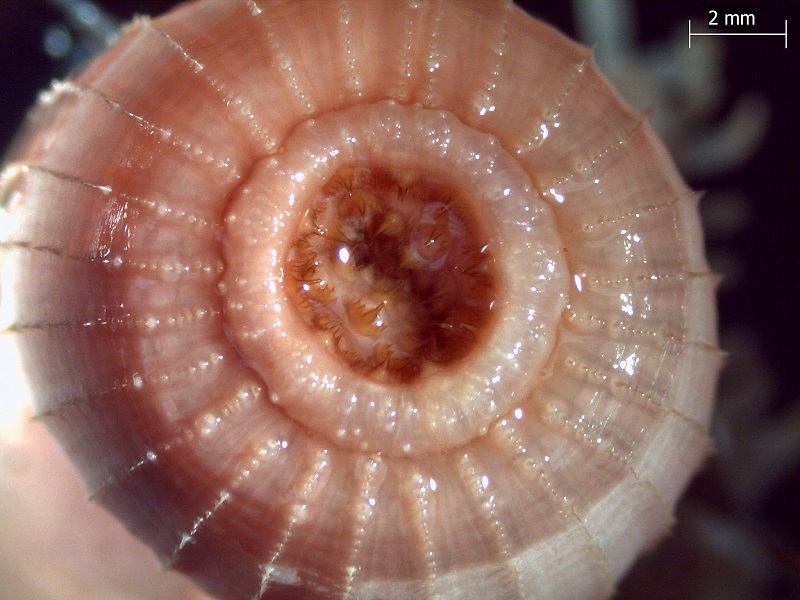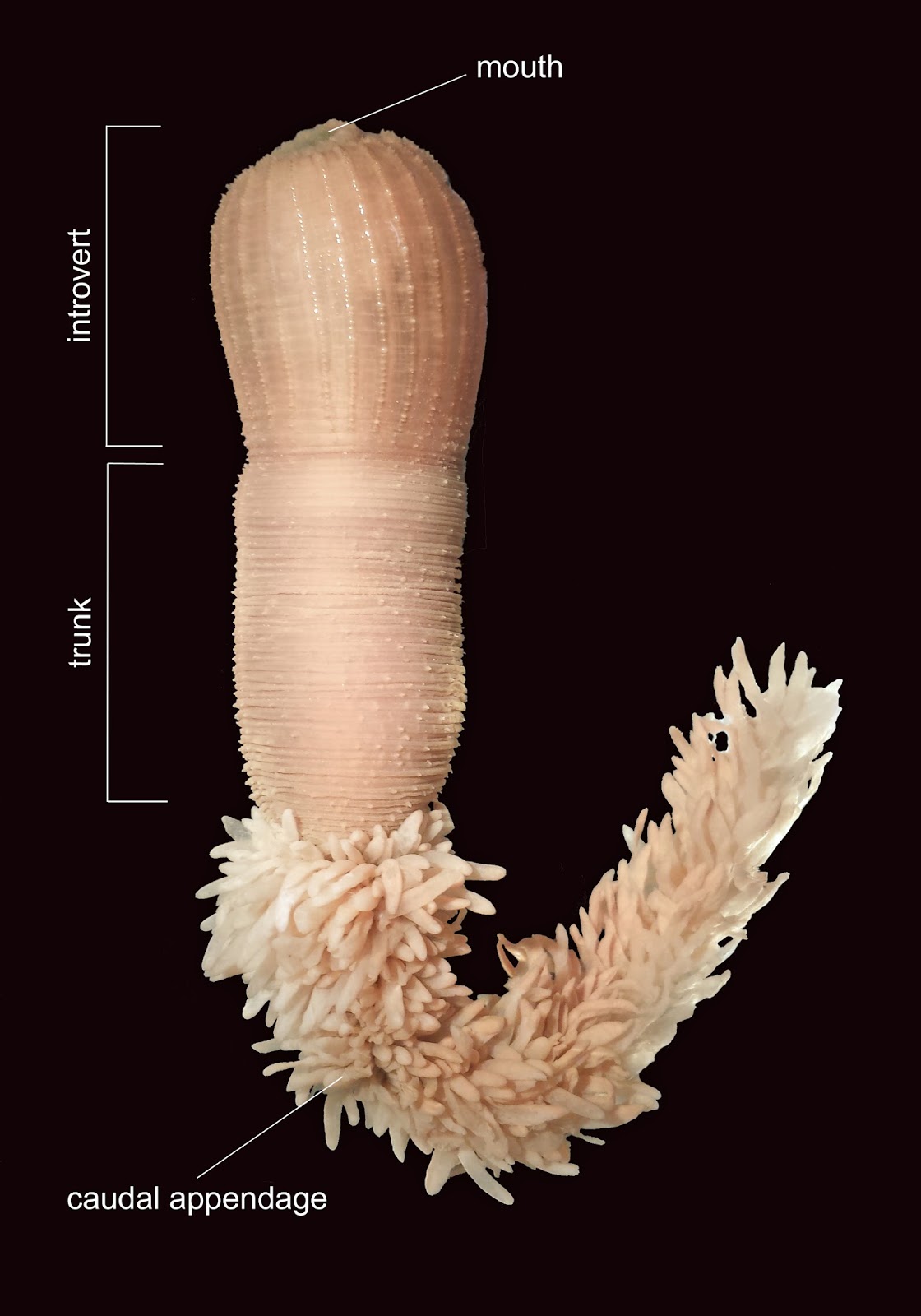Meet Priapulus caudatus, otherwise known as the cactus worm. January's critter is quite a beauty...
Priapulus caudatus – Cactus Worm
Cactus of the sea
Priapulus caudatus. Photo courtesy of Atli Arnarson
This month’s critter may look like a cross between a worm and a cactus, but it is actually neither. Priapulus caudatus belongs to a group of animals called cephalorhynchs, which means “beak-head.” This group is a mixed bag of several different types of animals that share a special feature – a swollen tubular mouthpart called a proboscis. The proboscis has tiny beak-like teeth and can be turned inside out to hook prey and then retracted back inside the body. Enlarged to human size, it could be the terrifying star of a science fiction movie.
Lifestyles of the weird and muddy
P. caudatus is actually giant in comparison to its microscopic relatives, reaching up to 15 centimeters in length! It prefers the cold water of high latitudes, and can be found from the shoreline all the way to the deep sea (about 7,500 meters.) Its favorite habitat is the soft silty mud of the sea floor, where it burrows hind-end-first by expanding and contracting the muscles in its body wall. It spends most of its time moving slowly through the sediment, reaching out with its proboscis to ensnare marine worms and any other slow-moving creatures it encounters.
We are family!
The family Priapulidae is a special group of cephalorhynchs that actually has more in common with shrimp or crabs than with worms. As they grow, priapulid adults and larvae shed their skin in a molting process called ecdysis. The ecdysis process is similar to how crustaceans shed their outer shells.
Today there are only about 16 species of priapulids world-wide, but numerous priapulid fossils have been found dating back millions of years to the Cambrian period.
The priapulid doesn't fall far from the tree
Priapulus caudatus, preserved specimen
Modern-day priapulids aren’t that different from their ancient ancestors. Their soft, unsegmented bodies are divided into three sections (see photo to the right):
- Introvert
The animal's anterior (head) end which contains the mouth. - Trunk
The midsection, which has a ringed appearance and is covered with tiny bumps called papillae. - Caudal appendage
A long feathery "tail," which serves various functions depending on the species. Scientists speculate the tail of P. caudatus may serve as a breathing organ.
Critter of the Month
Our benthic taxonomists, Dany and Angela, share their discoveries by bringing us a Benthic Critter of the Month. Dany and Angela are scientists who work for the Marine Sediment Monitoring Program. These posts will give you a peek into the life of Puget Sound’s least-known inhabitants.
In each issue we will highlight one of the Sound’s many fascinating invertebrates. We’ll share details on identification, habitat, life history, and the role this critter plays in the sediment community. Can't get enough benthos? See photos from our Eyes Under Puget Sound collection on Flickr. Look for the Critter of the Month on our blog.





